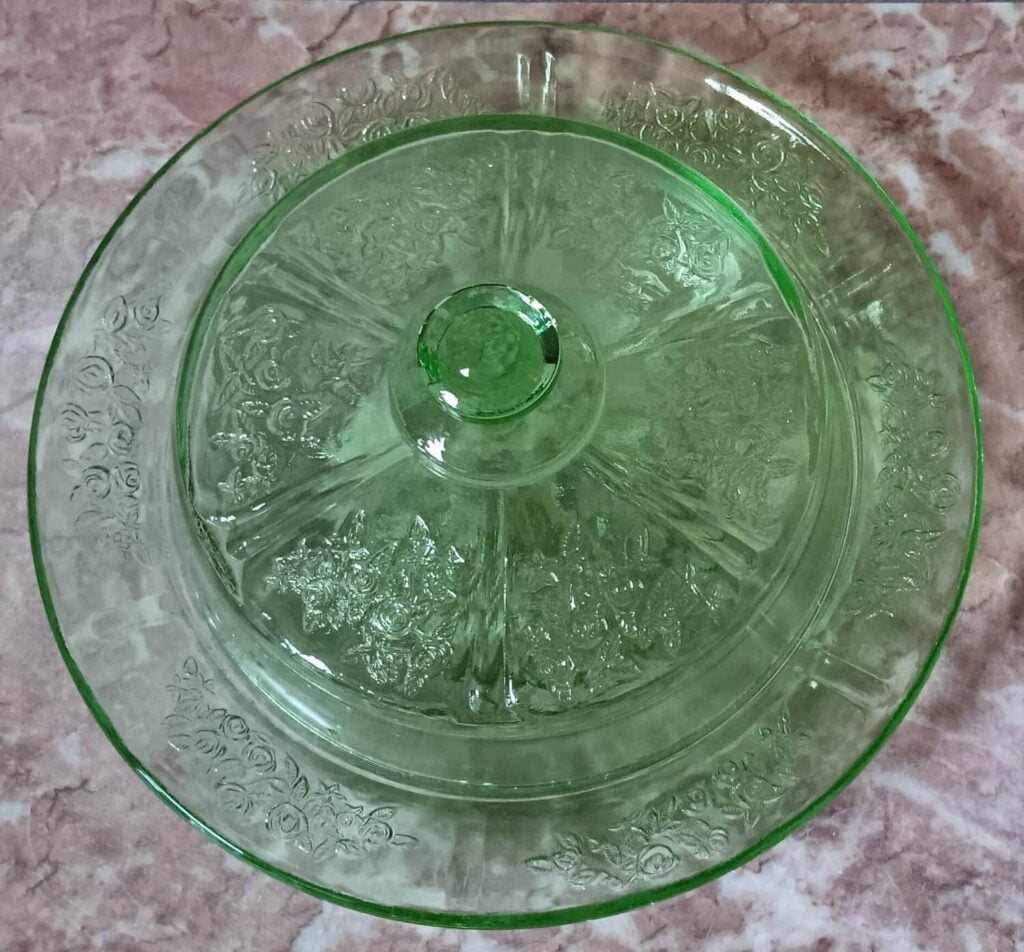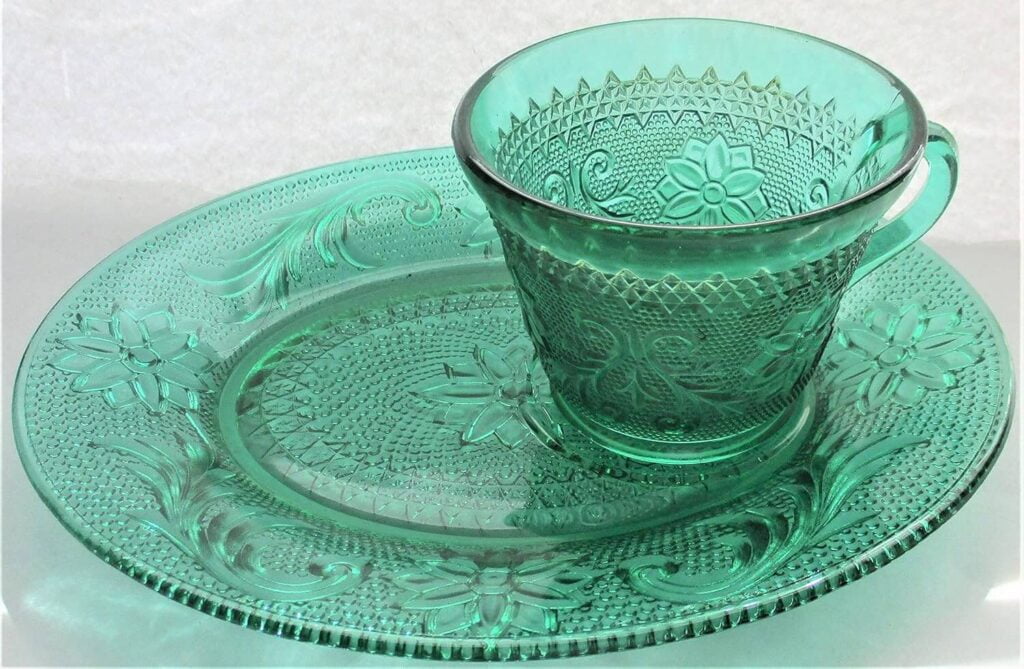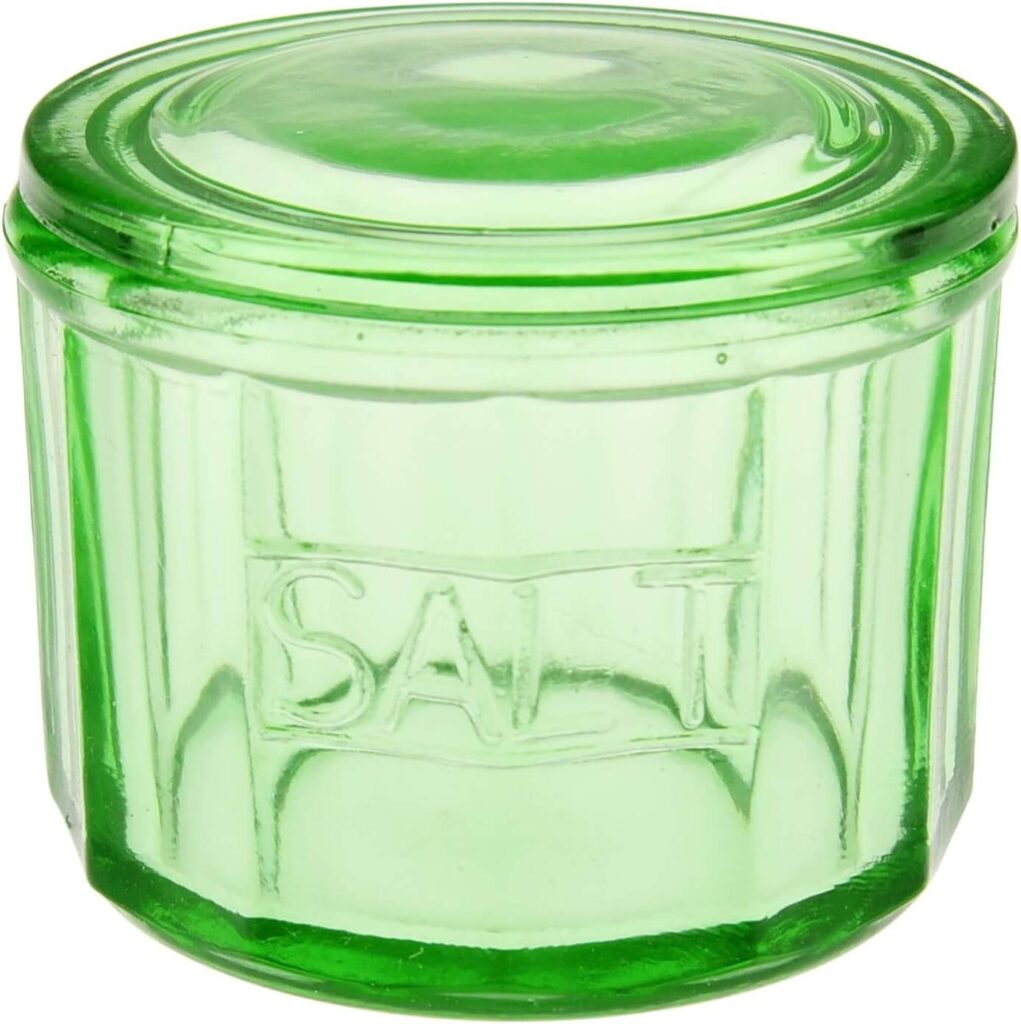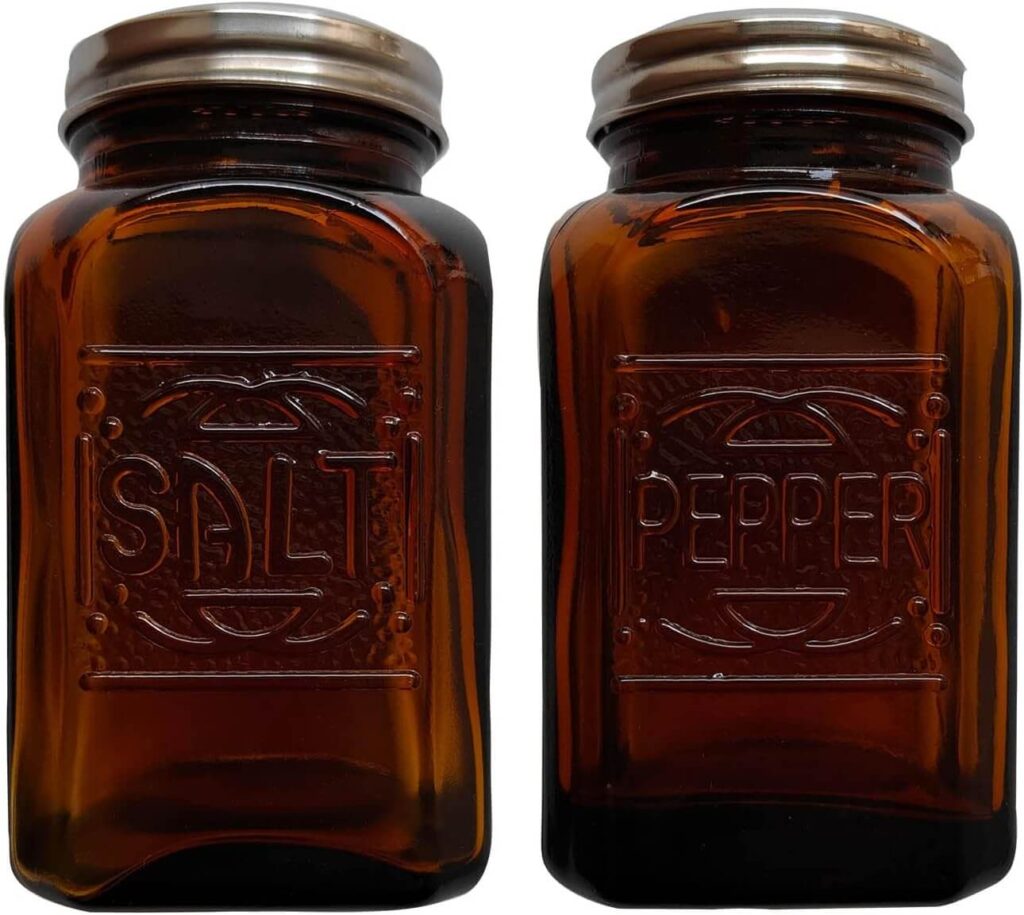During the bleak years of the Great Depression, amidst economic hardship and uncertainty, a glimmer of beauty emerged in the form of Depression glass.
With its delicate colors, intricate patterns, and affordable price tags, Depression glass became a beacon of hope for many households across America, adorning tables and lifting spirits during challenging times.
Fast forward to the present day, and Depression glass continues to captivate collectors and enthusiasts with its nostalgic charm and historical significance.
However, beyond its undeniable allure lies a lingering question: does Depression glass contain lead?
This inquiry has sparked debates and raised concerns within the collecting community and among health-conscious individuals.
In this exploration, we delve into the intricacies of Depression glass, uncovering its origins, discussing its appeal, and addressing the contentious issue of lead content.
As we navigate through conflicting opinions and scientific findings, we aim to shed light on this complex topic, empowering readers to make informed decisions about the acquisition, handling, and enjoyment of Depression glass in their lives.
Join us on this journey as we unravel the mysteries surrounding Depression glass, separating fact from fiction and illuminating the path towards a deeper understanding of this beloved yet enigmatic artifact of American history.
- WHAT IS DEPRESSION GLASS?
- DOES DEPRESSION GLASS CONTAIN LEAD
- CONFLICTING OPINIONS ON THE PRESENCE OF LEAD IN DEPRESSION GLASS
- IS DEPRESSION GLASS SAFE TO USE?
- IS GREEN DEPRESSION GLASS SAFE TO USE?
- IS DEPRESSION GLASS RADIOACTIVE?
- AMBER DEPRESSION GLASS
- IS DEPRESSION GLASS VALUABLE?
- DOES ALL DEPRESSION GLASS GLOW?
- IS PINK DEPRESSION GLASS RADIOACTIVE?
- IS YELLOW DEPRESSION GLASS SAFE TO USE?
- IS URANIUM GLASS HARMFUL?
- DOES HAZEL ATLAS GLASS CONTAIN LEAD?
- DEPRESSION GLASS HEALTH BENEFITS?
- DOES PRESSED GLASS CONTAIN LEAD?
WHAT IS DEPRESSION GLASS?
Depression glass earned its name because it was mass-produced during the Great Depression era ( 1929-1939).
Manufacturers used cost-effective methods to create affordable glassware during economic hardship.
These pieces were often given away as promotional items or sold at very low prices, making them accessible to struggling families.
Depression glass is made of inexpensive materials like soda-lime glass and comes in a variety of colors such as clear, yellow, pink, green, blue, red, pink, amber, and yellow. e.t.c
Depression glass is a highly type of collectible and has been collectible since the 1960s and becomes more and more collectible as it becomes rare.
DOES DEPRESSION GLASS CONTAIN LEAD

Depression glass does contain lead. This colored glassware, manufactured between 1929-1939 during the Great Depression, was mass-produced using a variety of metals and compounds, including lead oxide.
Lead was an essential ingredient that helped create the glass’s characteristic colors and improved its durability during the manufacturing process.
Key facts about lead in Depression glass:
– The lead content varies by color, with green and pink pieces typically containing higher concentrations
– Lead was used as a stabilizing agent and to produce clarity in the glass
– The lead oxide content could range from 12% to 36%, depending on the manufacturer and color
– While the lead is generally stable within the glass matrix, it can leach out under certain conditions, particularly when exposed to acidic foods or beverages.
CONFLICTING OPINIONS ON THE PRESENCE OF LEAD IN DEPRESSION GLASS
To begin this discussion, let us first lay this foundation: During the Great Depression, there were a handful of Depression glass manufacturers, but the most notable were Federal Glass Company, Indiana Glass Company, Hazel Atlas Glass Company, Anchor Hocking Glass Company, Jeanette Glass Company, MacBeth-Evans Glass Company, Imperial Glass Company, and a host of others.
You agree that adding lead to glassware products during the Depression would have been more expensive, right? So, with few resources, they had to mass-produce these Depression glasses in vast quantities.
The fear of lead and other toxic elements in glassware and other ceramic tableware stems from the fact that when we hear that glassware is old or vintage, we immediately think that it must have been made with lead because lead was commonly used in glass manufacturing processes at the time.
Take for example; is it all the Corelle old dinnerware that contains Lead? The answer is NO!
Secondly, most users are afraid and say that since Depression glass was often mass-produced using economical methods, they might have used lead as a stabilizer to achieve specific colors and textures.
Another assertion is that Depression glass items are not manufactured equally as many companies were involved.
Different manufacturers, patterns, and colors may have utilized varying formulations and may have resulted in differences in lead content.
In addition, the moment we see a piece of clear, brilliant, shining glassware, we think it must have been leaded, but this is not always the case. Crystal glass isn’t Depression glass, though they might look somewhat similar.
Even Brands like Mikasa which manufactures both regular glass and Crystal drinking glasses have pointed out that their crystal glass is lead-free because of the new innovative manufacturing methods and adherence to the FDA laws regarding compliance with safety standards.
Scientific studies and testing have been conducted to determine the lead content in Depression glass.
Results have been mixed. Some studies found detectable levels of lead, while others reported minimal to no lead present.
Presently, regulatory standards for lead content in consumer products have become stricter.
However, Depression glass predates many modern regulations, so users are worried its lead content may not meet current safety standards.
To conclusively determine if Depression glass contains lead, we recommend having items tested by professionals if lead exposure is a heavy concern.
For example, a lead experiment done by Lead SAFE Mama shows that the clear Depression glass is free from lead and other toxic elements, so we are left with other colored Depression glass.
Finally, handle and use Depression glass with caution, as collectors use them mostly as decorative pieces and for gifts.
IS DEPRESSION GLASS SAFE TO USE?
Modern experts recommend using Depression glass only for display purposes rather than for serving food or drinks.
While occasional use likely poses minimal risk, regular exposure to food or beverages could lead to lead leaching, especially with acidic contents like citrus juices, tomato-based foods, or vinegar.
IS GREEN DEPRESSION GLASS SAFE TO USE?
Green Depression glass is one of the most common types of glassware produced during the great depression era in the USA between the late 1920s and early 1940s.

Green Depression glass is not recommended for food use. These pieces typically contain both lead and potentially uranium oxide, which can leach into food or beverages.
While safe for display and collection purposes, green Depression glass should be used only as decorative items rather than functional dinnerware.

While safe for display and collection purposes, green Depression glass should be used only as decorative items rather than functional dinnerware.
IS DEPRESSION GLASS RADIOACTIVE?
Some Depression glass pieces are mildly radioactive, particularly those containing uranium oxide, which was commonly used to create yellow, green, and amber colors.
However, the radiation levels are generally very low and considered safe for display purposes. Uranium glass was manufactured until the 1940s.
AMBER DEPRESSION GLASS

Amber Depression glass usually comes in shades of amber or yellow. It was mass-produced and given away as a promotional item or sold at low prices during the great depression.
The glassware often featured intricate patterns and designs, adding a touch of elegance during a time of economic hardship.

Today, it’s sought after by collectors for its historical significance and nostalgic charm.
IS DEPRESSION GLASS VALUABLE?
Yes, most colors of Depression glass are valuable and heavily sought after by collectors because they can be sold for a substantial amount.
One of the most popular Depression glasses amongst collectors is the Pink Depression glass.
In addition, two colors are considered rare Depression glass and they are red and blue making them most valuable, expensive, and sought after more than the green and pink Depression glass.
DOES ALL DEPRESSION GLASS GLOW?
Not all Depression glass glows under ultraviolet light. Only pieces containing uranium oxide or manganese will glow.

Pink Depression glass typically glows due to manganese content, while green and yellow pieces may glow due to uranium oxide.
The presence of these elements was common in glass production during the Depression era.
IS PINK DEPRESSION GLASS RADIOACTIVE?
Pink Depression glass is typically not radioactive as it was colored using manganese rather than uranium oxide.
While it may glow under UV light due to the manganese content, this fluorescence is not related to radioactivity. However, pink Depression glass often contains lead.
IS YELLOW DEPRESSION GLASS SAFE TO USE?
Yellow Depression glass is not considered safe for regular food use.
While decorative displays are fine, these pieces often contain both lead and uranium oxide.
The potential for leaching of these substances, especially when in contact with acidic foods or hot liquids, makes them unsuitable for serving food or beverages.
IS URANIUM GLASS HARMFUL?
Uranium glass was made in the 18th century, they are different from Depression glass and you can only know this with the help of a UV light.
Some persons call Uranium glass Vaseline glass because of the yellow or yellowish-green color that glows bright green under backlight because of the presence of Uranium in the glass formulation.
It is good to note here that green-colored Depression glass is neither Vaseline glass nor Uranium glass.
Although uranium glass can produce low quantities of radiation, the levels are usually regarded as safe for handling;
However, do not use metals on uranium glass and avoid prolonged exposure or ingestion as this may pose health hazards.
It’s best to avoid prolonged contact or ingestion of uranium glass and to handle it with care by using it for decorative purposes.
DOES HAZEL ATLAS GLASS CONTAIN LEAD?
Hazel Atlas Glass Company was a prominent manufacturer of glassware in the United States, known for producing a wide range of glass products including kitchenware, dinnerware, and decorative glass items.
Established in the early 20th century, the company was particularly renowned for its Depression-era glassware.
It is not all Hazel Atlas Glass product lines that contain Lead. Hazel Atlas Glassware produced before the mid-20th century may contain trace amounts of lead, particularly in decorative or colored glass items.
However, the company also produced clear glassware that typically didn’t contain lead.
For example, the clear food storage Hazel Atlas glass Lid is Lead-free while the Vintage Orange Hazel Atlas Milk glass Mug contains Lead, cadmium, and even mercury.
DEPRESSION GLASS HEALTH BENEFITS?
Depression glass has no known health benefits.
Using Depression glass for food or beverages may pose health risks due to its lead and, in some cases, uranium content.
These pieces should be valued for their historical and decorative significance rather than any purported health properties.
DOES PRESSED GLASS CONTAIN LEAD?
Pressed glass can contain lead, as lead was commonly used in glassmaking processes to improve clarity and brilliance, as well as to aid in the molding of intricate designs.
However, not all pressed glass items contain lead, and the amount of lead can vary depending on factors such as the specific composition of the glass and the period in which it was produced.
For example, the Anchor Hocking pressed Wexford glassware made in 1967 – 1998 is Free from Lead while the Vintage Pressed small platter glass contains Lead and even antimony.
It is best to always test your glass brand for the presence of lead before you use it for food, especially old, vintage, or antique glassware.
REFERENCE: ULTIMATE GUIDE TO UNDERSTANDING DEPRESSION GLASS
1 thought on “Does Depression Glass Contain Lead”
Comments are closed.